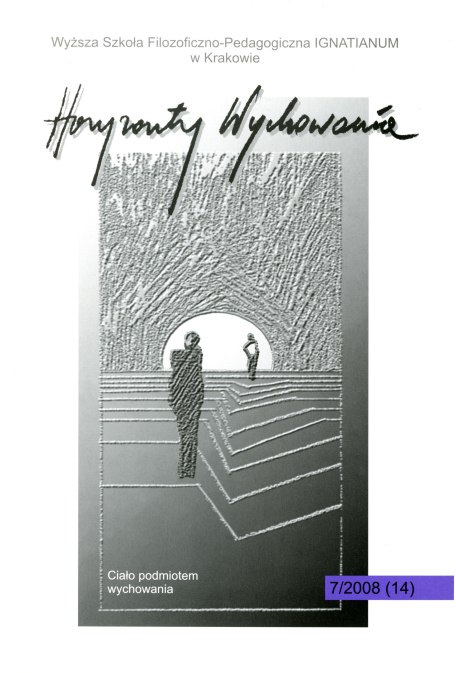Cenne ludzkie ciało
Abstrakt
In Indian tradition, the problem of the body cannot be examined irrespective of the ontological, anthropological and cosmological paradigm. In Brahmanism this paradigm was founded on cosmogonic schemes contained in the holy Vedic texts. The hymn Purusha Sukta presents the creation of the world from Pre-man; the word purusha stands for man. The primordial fi re rite resulted in the coming into existence of the whole world together with shaped and therefore divine – conditioned by the transcendental dimension of reality, with the social system and entire visible and invisible world. The most signifi cant issue emerging from this story is the conviction that the world which we perceive, the world we live in has not been created by God the Creator out of nothing, that there is no rift between divine and human nature, but the whole reality – including the one in the most external dimension, perceived as carnal – is the transformation of the divine element. And all these assumptions can be seen in all activities which we undertake to realize any activity, to reveal our abilities or capabilities. They are also seen in all these procedures which man – in all his psychophysical entirety – is subject to. Other forms of working with the body are considered in a similar way, for instance dance, theatre, or even martial arts schools. Yoga, as a point of reference for any activities is the procedure which ultimately leads to the transformation of consciousness, but it engages the whole psychophysical organism. The practice of yoga restores the primordial sense of measure and proportions. Physical activities and taking care of the body are essential, because they keep the psychophysical organism in health and harmony.Copyright (c) 2017 Horyzonty Wychowania

Utwór dostępny jest na licencji Creative Commons Uznanie autorstwa – Użycie niekomercyjne – Bez utworów zależnych 4.0 Międzynarodowe.
Uwagi dotyczące praw autorskich
Autorzy publikujący w tym czasopiśmie wyrażają zgodę na następując warunki:
- Autorzy zachowują prawa autorskie, przyznając czasopismu prawo do pierwszej publikacji swojego tekstu jednocześnie zarejestrowanego pod numerem licencji CC BY-ND, która pozwala innym na korzystanie z tego tekstu z uznaniem autorstwa tekstu oraz pierwotnej publikacji w tym czasopiśmie.
- Autorzy proszeni są o nawiązywanie odrębnych, dodatkowych porozumień wynikających z umowy, dotyczących dystrybucji opublikowanej w czasopiśmie wersji tekstu nie na prawach wyłączności (np. opublikowanie go w repozytorium instytucji lub w innym czasopiśmie), z potwierdzeniem pierwszej publikacji w tym czasopiśmie.
Wyraża się zgodę i zachęca autorów do publikacji ich tekstu w Internecie (np. w repozytorium instytucji lub na jej stronie internetowej) przed lub podczas procesu składania tekstu jako, że może to prowadzić do korzystnych wymian oraz wcześniejszego i większego cytowania opublikowanego tekstu (Patrz The Effect of Open Access). Zalecamy wykorzystanie dowolnego portalu stowarzyszeń badawczych z niżej wymienionych:





